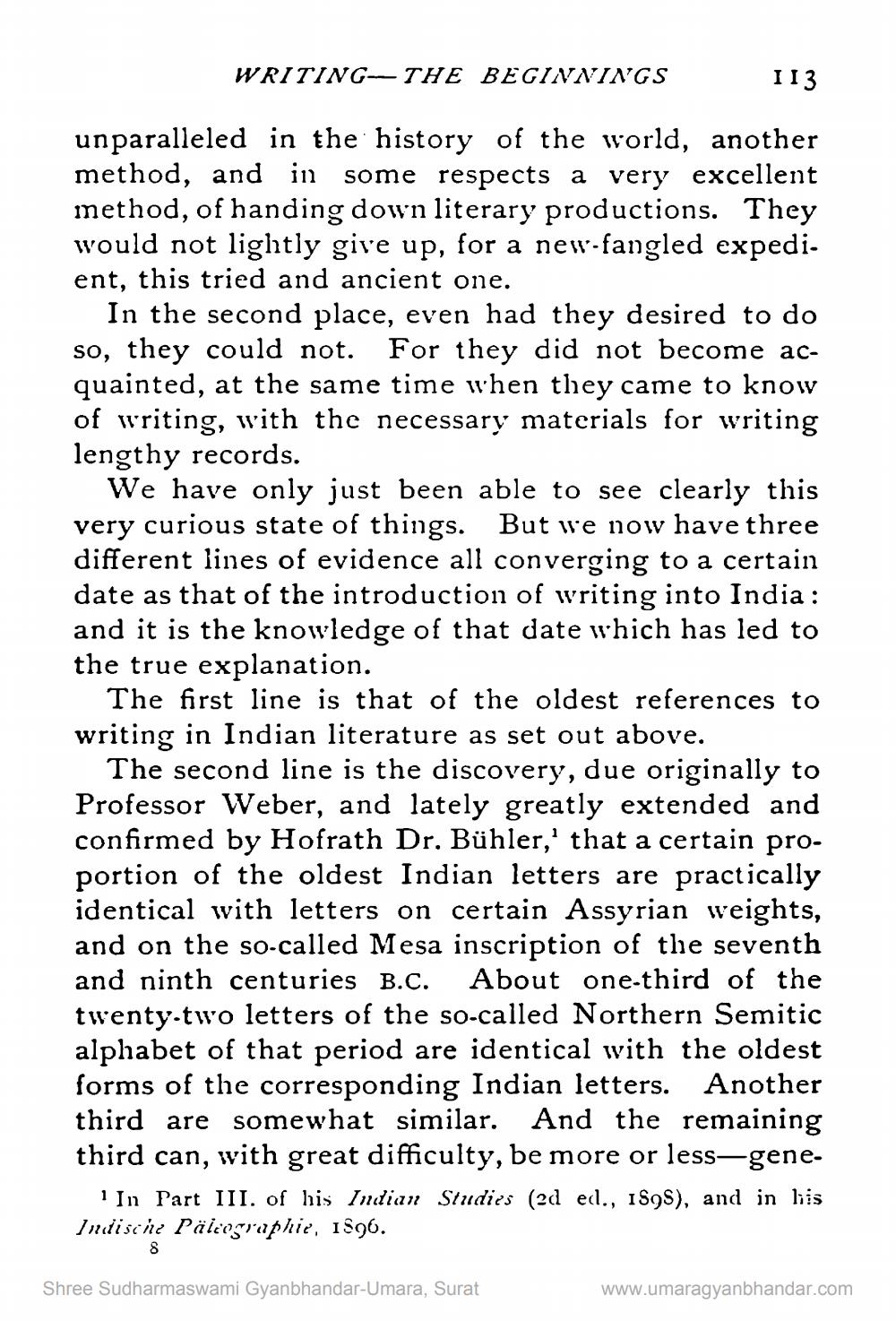________________
WRITING-THE BEGINNINGS
113
unparalleled in the history of the world, another method, and in some respects a very excellent method, of handing down literary productions. They would not lightly give up, for a new-fangled expedi. ent, this tried and ancient one.
In the second place, even had they desired to do so, they could not. For they did not become acquainted, at the same time when they came to know of writing, with the necessary materials for writing lengthy records.
We have only just been able to see clearly this very curious state of things. But we now have three different lines of evidence all converging to a certain date as that of the introduction of writing into India : and it is the knowledge of that date which has led to the true explanation.
The first line is that of the oldest references to writing in Indian literature as set out above.
The second line is the discovery, due originally to Professor Weber, and lately greatly extended and confirmed by Hofrath Dr. Bühler,' that a certain proportion of the oldest Indian letters are practically identical with letters on certain Assyrian weights, and on the so-called Mesa inscription of the seventh and ninth centuries B.C. About one-third of the twenty-two letters of the so-called Northern Semitic alphabet of that period are identical with the oldest forms of the corresponding Indian letters. Another third are somewhat similar. And the remaining third can, with great difficulty, be more or less-gene
1 In Part III. of his Indian Studies (2d ed., 1898), and in his Indische Pälcographie, 1896.
Shree Sudharmaswami Gyanbhandar-Umara, Surat
www.umaragyanbhandar.com




